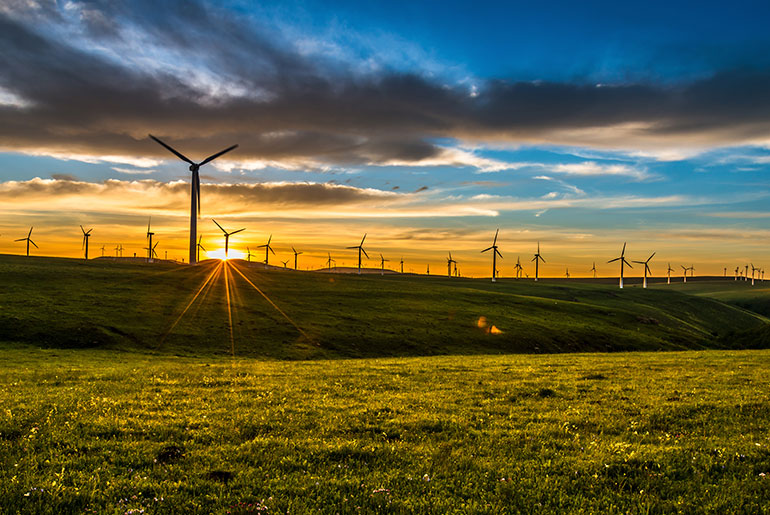
Access to affordable, reliable and sustainable energy across the globe is one of the 2030 targets of the United Nations. Wind plays a prominent role in the solution of increasing renewable energy, in part through the use of wind turbines. Drs. Raktim Bhattacharya and Robert Skelton in the Department of Aerospace Engineering at Texas A&M University are contributing to a solution by providing the means to build larger, lighter blades for the turbines using tensegrity principles with a $375,000 grant from the National Science Foundation.
The goal of their research is to develop a suite of theoretical and computational tools for the design of high strength-to-weight wind turbine blades with custom aeroelastic properties that are critical for deploying large wind turbine blades.

Wind power is one of the fastest-growing sources of new electricity supply and the largest source of new renewable power generation. The wind power industry is moving to offshore sites where larger wind turbines can be deployed. As the rotors become larger, the blades must become longer, but remain lightweight, strong and stiff.
Currently, fiber-reinforced polymer composites have been identified as the best material for rotor blades. Use of these composites poses some challenges, including design analysis, manufacturing, vibration control, structural health assessment and transportation.
The theoretical and computational tools the team is designing will significantly alleviate some of these challenges and provide a feasible path to address the proposed expansion to increase energy generation from 40 gigawatts in 2012 to 400 gigawatts in 2050 in the United States.

The tensegrity-based design of wind turbine blades has several advantages, including accurate modeling, aeroelastic tailoring, optimal sensing for structural health monitoring and the ability to contract to a smaller form for easy deployability.
The scientific problems that will be addressed in this research also present a new systems engineering perspective that is missing in current engineering. Typically, these systems are first built and modeled, then sensing and actuation architecture is decided in an ad hoc manner, followed by the design of the estimation/control law that is constrained by this ad hoc sensing and control architecture.
The Texas A&M team will use the grant to pursue an integrated approach for design of the structure, the sensing/actuator architecture (for control and optimal health monitoring), and the control law to alleviate stress and maximize energy absorbed from the wind. This will provide a new perspective with strong theoretical foundations.
Bhattacharya (top right) is an associate professor in the aerospace engineering department. Skelton (bottom left) is a TEES eminent professor and a member of the National Academy of Engineering.
